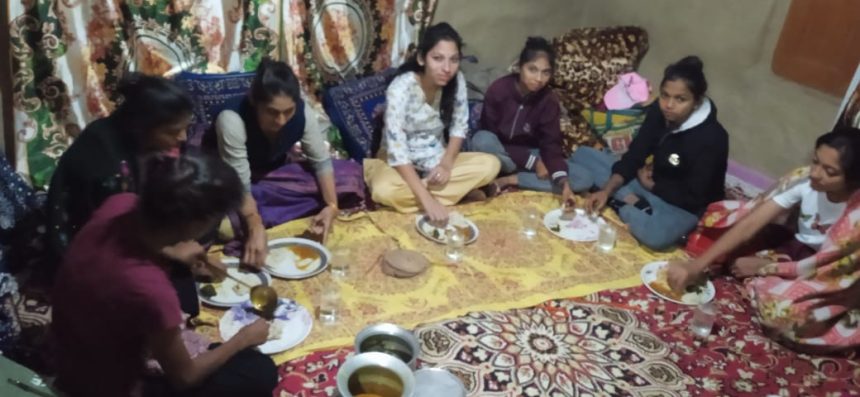Bandipora, August 6: For the first time, a remote border village in Jammu and Kashmir became the stage for a national convergence of tribal cultures. Held in Chorwan, a village located in Gurez Valley of North Kashmir’s Bandipora district, the National Tribal Festival hosted tribal artists from Tamil Nadu–Kerala border areas, Assam, and Gujarat, who not only performed their traditional dances but also lived with local Dard-Shina families, reviving a form of cultural immersion.
The event, organised by the Ministry of Tribal Affairs in collaboration with the Jammu & Kashmir government, was marked by a unique approach as artists, officials, and support teams were accommodated in the homes of local residents, instead of guesthouses or camps.
The aim, organisers said, was to create direct contact between the country’s tribal communities and the people of Gurez for a deeper understanding of customs, food, and language.
“We have performed in many states, but this is the first time we lived in the homes of local people, ate what they ate, and learned how they live,” said Prashanth, a performer from the Mrulayangani Paliya group, representing the Parabrahman Aradhana Nritham, a baby prayer dance from the Tamil Nadu–Kerala border.
The visitors were joined by Gujarat’s Rathwa Adivasi Lok Nritya group, Assam’s border tribal performers, and artists from other areas. They stayed in homes made of timber and mud, where traditional Gurezi kitchens served decades-old local dishes such as Langu (a thin native bean), Sheelu (wild forest greens, similar to collard greens), Ounu (rice prepared in traditional Shina style), and Baraw (buckwheat flatbread), once commonly eaten in the pre-electricity era.
“We revived foods our children hadn’t tasted. They (the visitors) reminded us of what we used to be,” said a 62-year-old lady of Chorwan who hosted a team from Assam.
Organisers said that nearly every aspect of the festival from food to accommodations was designed to restore, not replicate Gurez’s cultural fabric.
While the festival included official presence, with tribal affairs officers and cultural department teams from Delhi and Srinagar, the administrative delegation also participated in the cultural exchange, staying in the same households as the artists, and joining them during shared meals.
“There are no conference rooms here. To understand Gurez, you have to sleep under its roofs and eat from its hearths,” said an official.
The decision to symbolically adopt Chorwan village for the duration of the festival emerged organically. As artists bonded with their host families over three days, groups from Tamil Nadu, Gujarat and Assam shared their daily tribal routines with locals from how they cook and weave, to traditional musical instruments, body art, and the meaning behind their performances. Likewise, Gurez residents shared stories of pastoral life, seasonal migration, and mountain survival, creating a mutual exchange of living knowledge.
The local Dard-Shina culture was placed at the centre of the event with only lived experiences formed the basis of understanding.
“I had only seen Kashmir in films. Today I touched it, I lived it,” said Rita Rathwa, who led the Gujarat troupe. “We’ve travelled across India, but this feels like another world.”
The festival also drew local crowds from Tulail and Dawar, as villagers walked long distances on foot to watch the performances.
According to officials, the idea of future editions of this tribal exchange is under active consideration, possibly extending to other high-altitude tribal belts but the Gurez chapter, they said, will remain unique.







